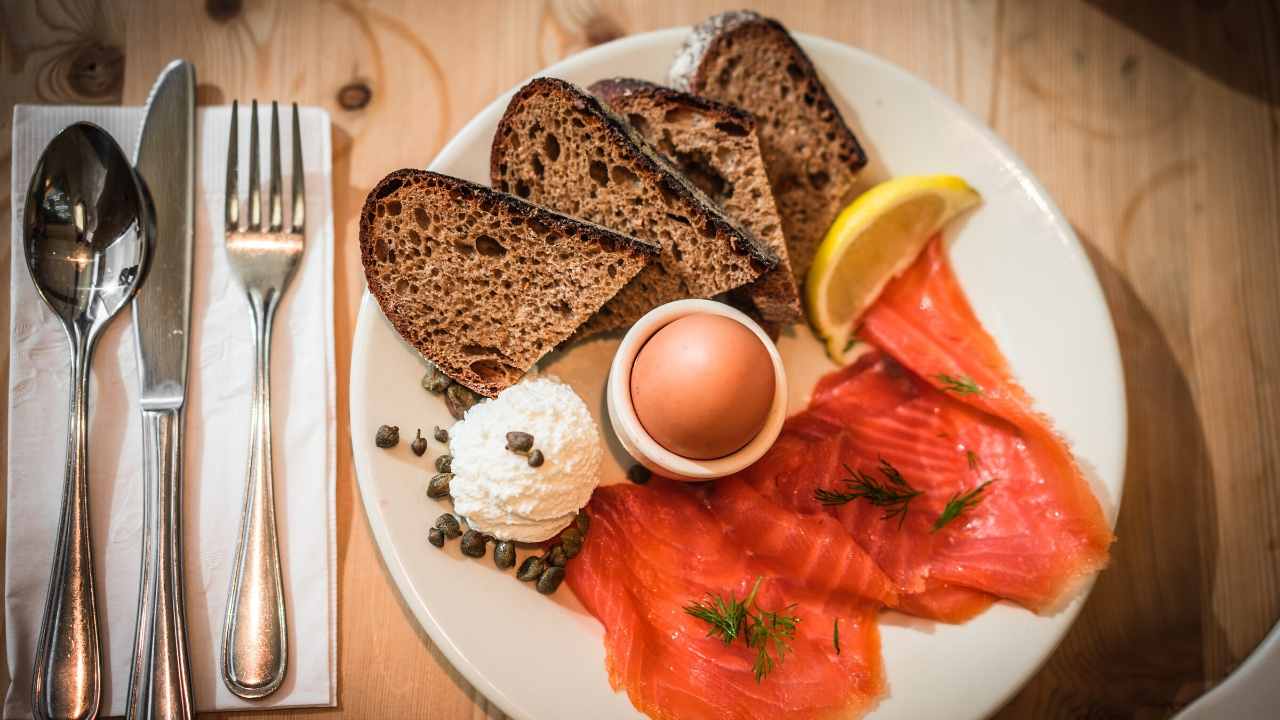
It can be confusing to know where to begin if you are looking to lower your cholesterol. The good news is that you can find delicious and healthy alternatives in a low cholesterol foods list. Here are some ideas to get you started. First, learn more about cholesterol and its various types. High cholesterol is generally considered to be bad. However, not all cholesterol can be bad. Some cholesterol can actually be good.
Reduce cholesterol by eating lean, poultry, and fish. Choose skinless chicken or turkey over dark meat. You can also enjoy fish and other seafood. But, be aware that shrimp and crawfish are higher in cholesterol and saturated fat than other meats. Because seafood contains omega-3 oils, it is a good choice. Other seafood is also low-cholesterol and high in omega-3 fat acids.

Fiber is an important part of a healthy diet. Insoluble and soluble fibers can both lower cholesterol levels. LDL cholesterol can be reduced by as much as 18% with the help of soluble fiber. Soluble fibre can also help lower blood pressure. It can also improve your gut health. LDL cholesterol can also be decreased by eating more fiber. Low cholesterol can also help you feel happier and more energetic.
High levels of fibre can help lower cholesterol. These nutrients can protect the intestinal lining from cholesterol absorption. Broccoli, aubergine, and pulses are great sources of fiber. Fruits, vegetables, and apples are high in fibre. Vegetable burgers and soy are good sources of both soluble fibers and protein. Black-eyed peas, which are rich in fiber and protein, are another great source.
Chicken breasts without skin are a good source of lean meat. Other lean meats include beef round and pork tenderloin. Choose lean meats instead of red meat if you're vegetarian. They are higher in calories and have more saturatedfat. You have the option to choose the right cut of meat. There are many lean meats that can be purchased at the local market. They are easily found at your local supermarket. When buying them, make sure to check their labels and ask for the TLC food list.

Seafood is another healthy option. Although you need to avoid the saturated fat, it can improve your cholesterol levels. Also, avoid fast and processed foods. These can be replaced with whole foods. You can also substitute sugary snacks for fruits, vegetables, or nuts. These foods can help you lose weight and lower your cholesterol. So, you should be careful and choose the best food for your body.
FAQ
Why is it important that we live a healthy and happy life?
Having a healthy lifestyle helps us live longer, happier lives. A healthy diet, regular exercise and good sleep habits will prevent the development of diseases such as heart disease, stroke, cancer, diabetes, and Alzheimer's.
Healthy lifestyles will help us to cope with daily stresses better and improve our mental health. A healthy lifestyle can also help you feel and look younger.
What is the difference among a virus or a bacterium and what are their differences?
A virus, a microscopic organism, is incapable of reproducing outside its host cell. A bacterium is a single-celled organism that reproduces by splitting itself in two. Viruses are small, around 20 nanometers in size. Bacteria are much larger, at 1 micron.
Viruses spread easily through contact with infected bodily tissues, such as saliva and urine, semen, vaginal secretions or pus. Bacteria are usually spread through direct contact with contaminated objects or surfaces.
Viruses can enter our bodies through cuts, scrapes, bites, or other breaks in the skin. They may also get into the body through the nose and mouth, eyes, ears or rectum.
Bacteria can be introduced to our bodies by cuts, scrapes or burns. They may also be introduced into our bodies through food and water as well as soil, dirt, dust, and animals.
Viruses and bacteria both cause illness. Viruses can not multiply within the host. They only cause disease when they infect living tissue.
Bacteria can cause illness by multiplying in the body. They can also invade other parts of your body. They can even invade other parts of the body, which is why antibiotics are necessary to eradicate them.
What is the best way to eat?
The best diet for you depends on several factors, like your age, gender, weight, health conditions, and lifestyle habits. You should also consider how much energy your exercise consumes, whether you like low-calorie or high-calorie foods, and what you enjoy in terms of eating fruits and veggies.
If you are trying to lose weight, then you may want to try intermittent fasting. Intermittent Fasting means that you eat only specific meals throughout your day and not three large meals. This may be a better option than traditional diets with daily calorie counts.
Intermittent fasting has been shown to improve insulin sensitivity, reduce inflammation and lower the risk of developing diabetes. Other research suggests that intermittent fasting may promote fat loss and improve overall body composition.
Supplements and herbs can improve immunity
To boost immunity function, herbs and natural remedies are available. Examples include ginger, garlic and oregano oils, echinacea, vitamin C, ginkgo loba, and echinacea.
These herbal remedies should not be used in place of conventional medical treatment. Side effects may include nausea, diarrhea, stomach cramps (dizziness), headaches, dizziness and stomach cramps.
Statistics
- According to the Physical Activity Guidelines for Americans, we should strive for at least 150 minutes of moderate intensity activity each week (54Trusted Source Smoking, harmful use of drugs, and alcohol abuse can all seriously negatively affect your health. (healthline.com)
- The Dietary Guidelines for Americans recommend keeping added sugar intake below 10% of your daily calorie intake, while the World Health Organization recommends slashing added sugars to 5% or less of your daily calories for optimal health (59Trusted (healthline.com)
- nutrients.[17]X Research sourceWhole grains to try include: 100% whole wheat pasta and bread, brown rice, whole grain oats, farro, millet, quinoa, and barley. (wikihow.com)
- In both adults and children, the intake of free sugars should be reduced to less than 10% of total energy intake. (who.int)
External Links
How To
What does the meaning of "vitamin?"
Vitamins are organic substances found naturally in food. Vitamins allow us to absorb nutrients from food. Vitamins cannot be produced by the body. They must be acquired from food.
There are two types vitamins: water soluble or fat soluble. Water-soluble vitamins dissolve easily when they are dissolved in water. You can find vitamin C,B1 or thiamine, B2 or riboflavin and B3 or niacin, B3/niacin, B6/pyridoxine, folic Acid, biotin and pantothenic Acid as examples. Fat-soluble vitamins are stored in the liver, fatty tissue and kidneys. These include vitamin D, E and K, as well as beta carotene.
Vitamins are classified according their biological activity. There are eight major vitamin groups:
-
A - essential for normal growth and maintenance of health.
-
C – essential for proper nerve function.
-
D - essential for healthy bones, teeth, and gums.
-
E is needed for good reproduction and vision.
-
K - Required for healthy nerves and muscles.
-
P - vital for building strong bones andteeth.
-
Q – aids digestion of iron and iron absorption
-
R - Required for red blood cell production
The recommended daily allowance for vitamins (RDA) varies based on gender, age, and physical conditions. The U.S. Food and Drug Administration has established the RDA values.
For adults over 19 years, the RDA is 400 mg per day for vitamin A. However, pregnant women need 600 micrograms per day because it is important for fetal development. Children ages 1-8 require 900 micrograms per day. Infants below one year old require 700mg per day. But, between 9 months to 12 months, the amount drops to 500mg per day.
Children ages 1-18years who are obese need 800 micrograms per day while those who are overweight need 1000 micrograms per day and children who are underweight need 1200 micrograms per day to meet their nutritional needs.
Children between 4 and 8 years old with anemia will need 2200 micrograms daily of vitamin C.
2000 micrograms daily is required for adults over 50 to maintain their general health. Breastfeeding or pregnant women require 3000 micrograms per daily due to higher nutrient demands.
Adults over 70 years of age need 1500 micrograms per day since they lose about 10% of their muscle mass each decade.
Women who are pregnant, nursing or breastfeeding need more than the RDA. Pregnant women need 4000 micrograms per dayduring pregnancy and 2500 micrograms per day after delivery. Breastfeeding mothers need 5000 micrograms per day when breast milk is being produced.